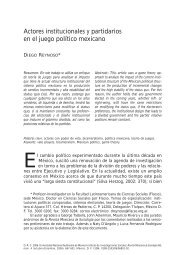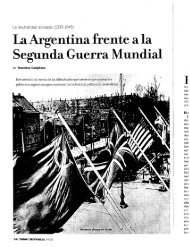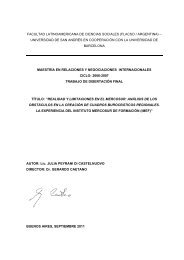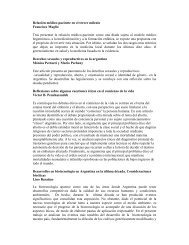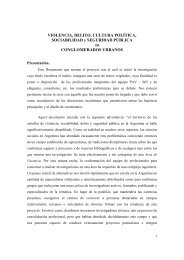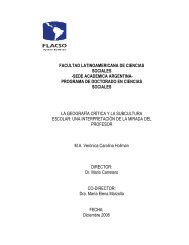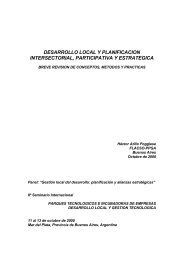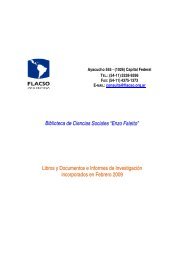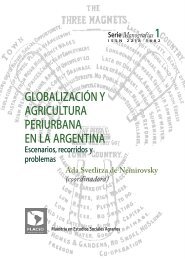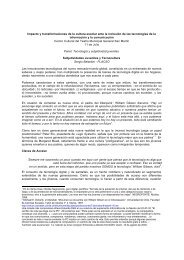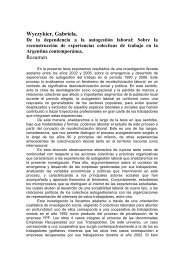Mercedes Botto Andrea Carla Bianculli - Flacso
Mercedes Botto Andrea Carla Bianculli - Flacso
Mercedes Botto Andrea Carla Bianculli - Flacso
You also want an ePaper? Increase the reach of your titles
YUMPU automatically turns print PDFs into web optimized ePapers that Google loves.
Two main reasons account for this. In the first place, and given that most of the members of the<br />
economic team had been trained in the ECLAC, they shared many of the assumptions and<br />
paradigmatic guidelines promoted by this regional organization. Secondly, and especially regarding<br />
the country office in Buenos Aires, ECLAC’s experts had undertaken industrial policy as an<br />
important area of research20. This clearly explains the active role ECLAC had in the definition<br />
and design of the CGP21. The private sector was also involved in the design of the macro proposal, but it did not present any<br />
concrete written document regarding the final text of the CGP. Business participation was induced<br />
by the government as a way of preventing conflicts and technical difficulties within both<br />
administrations. The summoning was immediate and once Argentina and Brazil had already given<br />
the first step towards regional integration by the end of 1985.<br />
At the presidential meeting that took place in Foz de Iguazú in November 1985, Argentina and<br />
Brazil agreed to establish a high-level bilateral commission. Comprised of government and private<br />
sector representatives, this commission was intended to discuss and launch bilateral integration.<br />
Oscar Romero recalls that this decision was based on the fact that “the integration process design and the<br />
design of the concrete solidarity scheme between both countries, should not be developed at the grey desk of a bureaucrat<br />
or political official; instead this should result from the participation of real actors or economic agents. Both presidents<br />
decided to include the most representative private agents, businessmen and business groups from both countries, so that<br />
they would not protect the apples, the rice or the meat, but instead would be the individuals capable of helping in the<br />
design of the bilateral relationship that we so much needed ” [Romero, as cited in Campell, 1999: 65].<br />
Once the CGP had been signed, governments embarked in the difficult task of composing the<br />
positive lists of the products and items to be liberalized. This implementation phase involved the<br />
direct participation of an external expert, especially appointed by the Argentine government given<br />
the lack of technical knowledge and expertise in this particular area. Only a reduced number of<br />
companies, from some highly concentrated sectors and oligopolies – namely, the iron and steel, and<br />
the petrochemical industries – counted with this extremely specialized information and expertise<br />
given that they had also been part of the negotiations carried out within both LAFTA and LAIA.<br />
However, these sectors were not included in the agreement22. Daniel Chudnovsky, an academic with no previous experience in public administration, was then<br />
appointed for the implementation of the CGP. Apart from drawing numbers and comparative<br />
statistics regarding the situation of the capital goods sector in Argentina and its potential<br />
complementarity with Brazil, Chudnovsky’s designation was intended to fulfil two crucial<br />
was mainly influenced by the ECLAC philosophy, and the ideas of its first Secretary-General, the economist<br />
Raúl Prebisch.<br />
20 The report presented by ECLAC was the basis for the Integration Act signed by Argentina and Brazil in<br />
July 1986, which would be the juridical departure line for the PICE.<br />
21 Interview with public official.<br />
22 Interview with academic.<br />
20



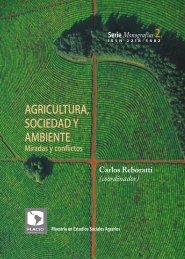
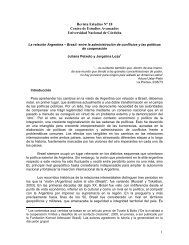
![[P] Disertacion.Melisa.Galvano.pdf - Flacso](https://img.yumpu.com/14596629/1/184x260/p-disertacionmelisagalvanopdf-flacso.jpg?quality=85)
